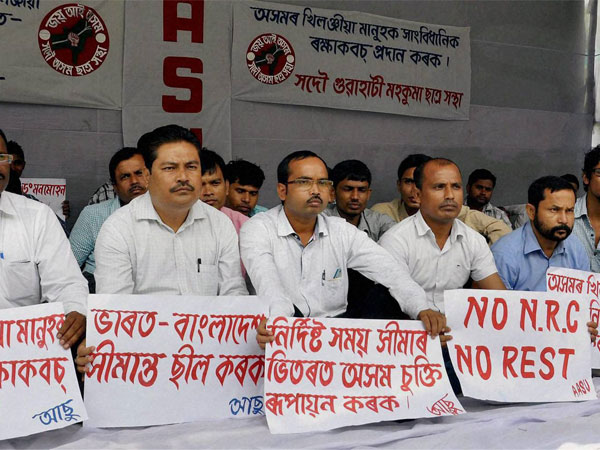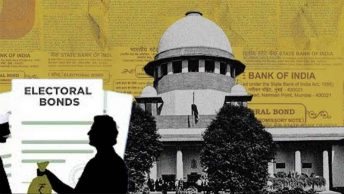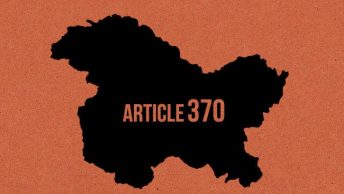Introduction
The exercise of citizenship and the claims towards it are a fundamental aspect of the modern conception of the state. This idea has come to the forefront in Assam where the indigenous Assamese citizens’ rights have clashed with those of immigrants. These immigrants entered India in the aftermath of the Bangladesh Liberation War in 1971. The exodus from the then East Pakistan was absorbed by Assam and the migrants were enfranchised. Assam Sanmilita Mahasangha v. Union of India brought to the forefront the process of addressing the illegal immigration and its associated problems. The Assam Movement of 1979-1985 spearheaded by the All Assam Students Union (AASU), in response to the Bangladeshi Liberation War of 1971, demanded the detection and deportation of illegal immigrants from Bangladesh who had entered Assam after March 24, 1971. These demands were spurred by concerns over the loss of political and economic power of the indigenous people of Assam due to the influx of immigrants.
The Parliament in response had passed the Illegal Migrants (Determination by Tribunals) Act, 1983 to deport foreigners, which would later be declared unconstitutional by the Supreme Court in its judgement in Sarbananda Sonowal v. Union of India. In 1985, the Assam Accord, a political settlement, was signed between the leaders of the movement and the Government of India, which provided for the detection and deportation of illegal immigrants from Bangladesh who entered Assam after March 24, 1971. The Accord also provided for the preparation of a National Register of Citizens (NRC) to identify Indian citizens in Assam. Section 6A of the Citizenship Act, 1955 was introduced as a part of the settlement, specifically to the territory of Assam. This Section classified illegal immigrants from Bangladesh into Assam in 3 categories-
- Those who entered before 1966
- Those who entered between 1966 and 25th March, 1971
- Those who entered post 25th March, 1971
These were used to regularize or give citizenship to the immigrants. The first category would be regularized immediately. Persons from the second category would be granted citizenship after they had resided in the state for at least ten years and could prove their Indian citizenship, and in the meanwhile taken off the electoral records. The third class of immigrants would be treated as illegal immigrants and deported.
It is primarily the presence and constitutional validity of this Section that is being challenged. The petition was referred to a two-judge bench of the Supreme Court, consisting of Justices Ranjan Gogoi and RF Nariman, that framed 13 questions pertinent to the matter and then referred the matter to a larger constitutional bench under Article 145(3) in 2014. This bench, concomitantly, allowed for the National Register of Citizens, based on the classification under Section 6A.
A larger constitutional bench comprising of five judges was formed in 2017, three of whom retired in 2018 and thus, a fresh bench needs to be constituted.The petition was last heard on 10th January, 2023, after having been dormant. Alongside, the court had tried to monitor the National Register of Citizens exercise in 2019. It had remained involved in the process of finalising the register after a 2014 draft. When approached by the centre and Assam government for reverification of data, it set hard deadlines for the exercise.
Issues
The Solicitor General of India, while arguing before the court, categorised the issues under 3 primary heads— those under Section 6A of the Citizenship Act, 1955, those pertaining to the National Register of Citizens, and those pertaining to the Foreigners Tribunals. The constitutional infirmity of Section 6A was mainly contested upon and hence, made the focus of the petition in question.
It has been questioned whether the provisions of Section 6A can be permitted under Articles 10 and 11 of the Constitution when the cut-off date provided in the Section is in direct violation of that under Article 6 (which uses 1948 as a threshold) and also Article 14, given its application solely in Assam. Furthermore, given that no mechanism has been devised to determine an ordinary resident of Assam vis-à-vis the Section, whether it can violate the fundamental rights of Assamese citizens has been brought up. Additionally, the consequences of the influx of Bangladeshi immigrants affecting the Right to Life under Article 21 is a salient issue before the Hon’ble Supreme Court.
An ancillary approach to the consequences of the introduction of Section 6A has been taken in the form of Article 29(1) in terms of how conservation of culture can be interpreted.
The Petition
Articles 5 and 6 of the Indian Constitution have been included to demarcate the extent of the scope, meaning and effect of citizenship. Article 11, while it allows the Parliament of India to regulate citizenship by law, does not afford it the leeway to bypass the constitutional provisions on the subject under Articles 5 to 10. Hence, it has been argued that the exercise of this power to introduce Section 6A is constitutionally unsound as it carves a separate class of citizens beyond the scope of Articles 5 and 6. This classification has been considered arbitrary, discriminatory and infringing on the principles of equality.
The petitioners have gone on to quote the Supreme Court in Sarbananda Sonowal v. Union of India to highlight a state of internal disturbance in Assam, coupled with external threats. These threats were gleaned by the court from a report by the Governor of Assam that addressed the militant threat to the state, primarily because of the immigrants. Such a situation, they have argued, merits intervention, not naturalisation.
The contention of the petitioners is that by virtue of its existence, Section 6A of the Citizenship Act, 1955 infringes the rights of the Assamese peoples under Article 14 of the Constitution. The Section discriminates by creating a separate class of illegal immigrants in Assam, entering on or before 25.03.1971, to be naturalised as citizens, even as they would not have such an option in the rest of the country. The context of the Bangladesh Liberation War of 1971, the reason for such immigration, has not been acknowledged as a reasonable classification.
The distinction between the protection and the benefits of the state being extended to citizens and that to non-citizens has also been brought up by the petitioners. The locus of these benefits in the context of Assam’s indigenous tribes and peoples is the Sixth Schedule of the Constitution. Keeping that in mind, the petitioners have highlighted that the influx of illegal immigrants being conferred citizenship has led to an alleged usurpation of indigenous land, and by extension, their livelihoods and lifestyles. Additionally, they argued that Section 6A dilutes the political rights under Article 326. In the context of their language, script and culture, they have contested a violation of Article 29(1) because of a rapid demographic change. The petitioners have also sought that the National Register of Citizens for Assam be updated based on the 1951 NRC instead of the electoral rolls from March 1971. This is to keep the standard for naturalising immigrants the same in Assam as the rest of the nation, unaffected by the wake of the Liberation War, as the 1951 Census only incorporated the immigrants after Partition.
The government, in response, has argued that the present manner of the NRC is necessary to identify illegal immigrants who had entered Assam after March 24, 1971, and to protect the rights of genuine citizens, given that the process is fair and transparent, and it provides sufficient opportunities for people to prove their citizenship.
Analysis
The ripples of the two-judge bench’s judgement and the emphasis away from the NRC issue in the present case have already been felt in ancillary litigation like in Lal Bhanu v. Union of India and Ors. wherein petitioners have been labelled foreigners in the NRC, this being reinforced by Foreigner Tribunals. The burden of proof being shifted to the petitioner under the Foreigners Act then highlights the urgency of some clarity on the subject-matter. The essence of citizenship is fundamentally a bureaucratic construct. As the state governs its inhabitants, the paper trail becomes paramount. The state, in defining its citizens, seeks documents that validate identity. There is a strict control what can or cannot be a source of a citizen’s ‘identity’ then. Statelessness is thrust onto citizens and immigrants alike, such individuals who are not considered citizens of any country lack access to basic rights and services. Many of these people are unable to provide sufficient documentation or are excluded due to bureaucratic errors in the verification process, leading to their exclusion from the NRC and being deemed stateless.
Citizenship transcends the legal status conferred by the state and the benefits accrued by it, especially when it is closely linked to the identity and belonging of its constituents. In the case of Assam, the question of citizenship is intertwined with the region’s history of migration and settlement, as well as its diverse linguistic and cultural traditions. The exigency of Assam Sanmilita Mahasangha v. Union of India is experienced by the countless people whose citizenship is under the threat of being denied after almost four decades of having been naturalised.







